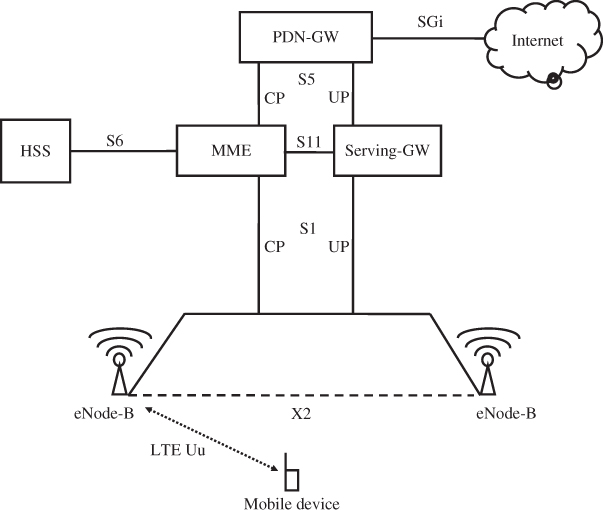4.2 Network Architecture and Interfaces
The general LTE network architecture is similar to that of GSM and UMTS. In principle, the network is separated into a radio network part and a core network part. The number of logical network nodes, however, has been reduced to streamline the overall architecture and reduce cost and latency in the network. Figure 4.1 gives an overview of the LTE network and its components and the following sections give a detailed overview of the tasks of the different nodes and how they interact with each other. The subsequent sections then go on to describe the most important functionality in more detail.
Figure 4.1 LTE Network Overview.

4.2.1 LTE Mobile Devices and the LTE Uu Interface
In the LTE specifications, as in UMTS, the mobile device is referred to as the User Equipment (UE). In 3GPP Release 8, five different UE classes have been defined as shown in Table 4.1 and as defined in 3GPP TS 36.306 [2]. Unlike in HSPA where devices support a wide range of different modulation and coding schemes because of the continuing evolution of the standard, LTE UEs support the very fast 64-QAM (Quadrature Amplitude Modulation) in the downlink direction and antenna diversity. In addition, all device classes except for the lowest support MIMO transmission, a multistream data transmission method that is discussed in more detail below.
Table 4.1 LTE UE categories ...
Get From GSM to LTE: An Introduction to Mobile Networks and Mobile Broadband now with the O’Reilly learning platform.
O’Reilly members experience books, live events, courses curated by job role, and more from O’Reilly and nearly 200 top publishers.

